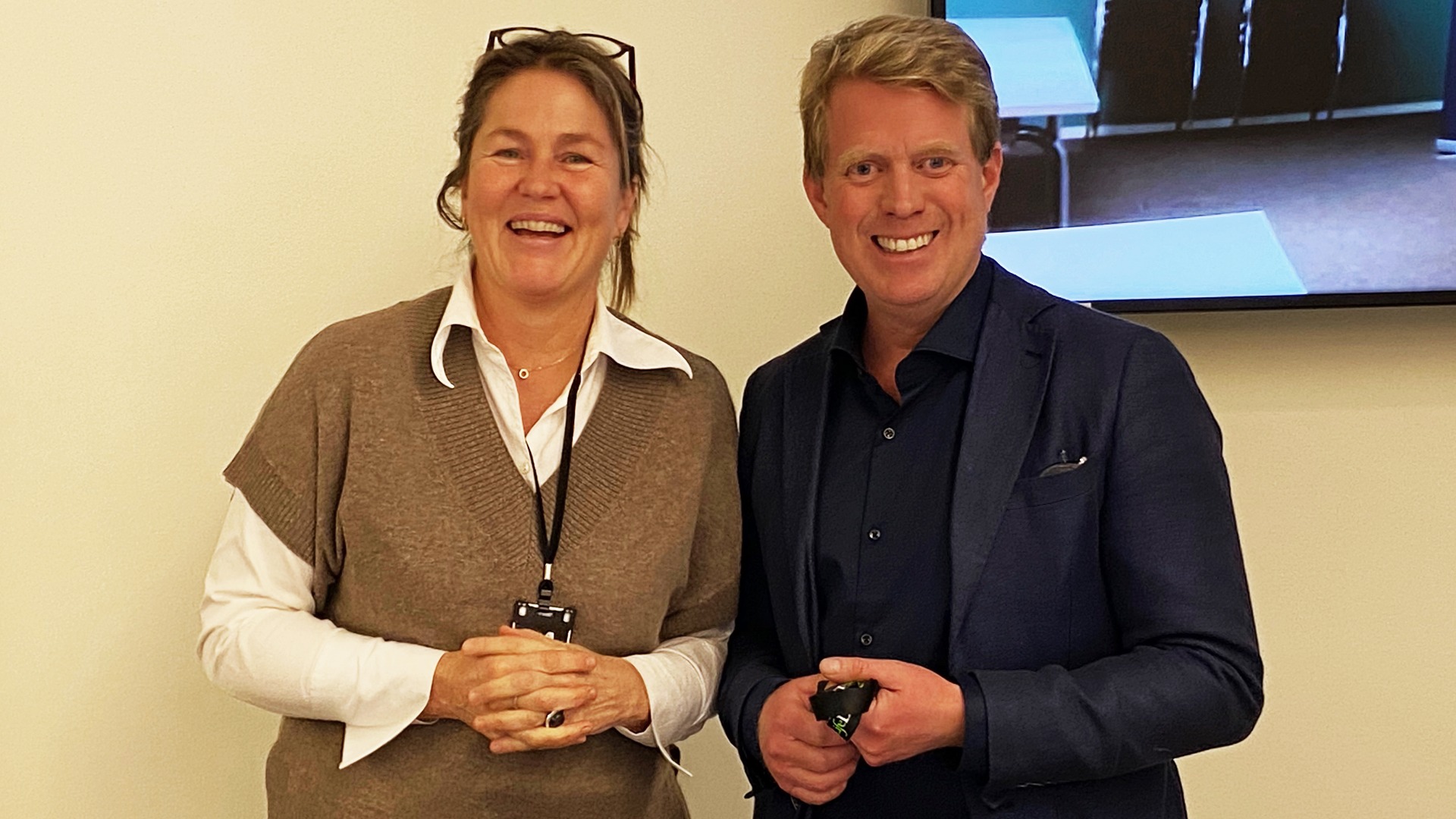Latest DDD-exit: MTHFD2 inhibitor for AML treatment
SciLifeLab researcher Thomas Helleday (Karolinska Institutet) and his group have investigated the role folate metabolism enzyme (MTHFD2) plays in DNA replication and genomic stability of cancer cells. The researchers validates MTHFD2 as an anti cancer target and presents optimized potent MTHFD2 inhibitors (MTHFD2i) that can suppress acute myeloid leukemia by slowing down replication speed and inducing thymidine depletion, leading to apoptosis. The project is the latest project leaving the SciLifeLab Drug Discovery and Development platform (DDD).
“Our main focus is to better understand the mechanisms behind altered nucleotide metabolism and DNA repair and share it with research groups around the world, enabling more basic research. We also collaborate with both national and international researchers to evaluate treatments for diseases other than cancer”, says last author Thomas Helleday.
The thymidine synthesis pathways are often upregulated in cancer and have, since the 1940s, been targeted therapeutically to induce thymineless cell death. The folate metabolism enzyme (MTHFD2) has recently gained a lot of attention due to its overexpression in a large variety of cancers combined with its role in thymidine synthesis, and is considered an emerging anticancer target. MTHFD2 is vital for DNA replication and genomic stability, but its role in DNA damage response and repair is not fully understood.
The Thomas Helleday lab wanted to further investigate the role of MTHFD2 in cancer but also to develop potent MTHFD2 inhibitors (MTHFD2i) to evaluate their anti-cancer effects against acute myeloid leukemia (AML).
By binding to the active MTHFD2 site, the MTHFD2i was capable of reducing the replication speed and induce replication stress by preventing thymidine production, leading to mis-incorporation of uracil into DNA and replication stress. This subsequently led to S phase arrest and apoptosis in the AML cells, both in vitro and in vivo. The transformed cells turned out to be four times more sensitive to the treatment than healthy cells.
“We work continuously to develop new targeted therapies based on basic scientific findings. We are a multidisciplinary translational research group that focuses on understanding basic DNA repair and DNA damage signaling pathways as well as nucleotide metabolism. We develop new drugs for anti-cancer treatments and for the treatment of inflammation and autoimmunity”, says co-first author Martin Henriksson (Karolinska Institutet).
The study, accepted for publication, has been a close collaboration with the SciLifeLab Drug Discovery and Development platform (DDD). Protein purification, assay development, HTS and Fragment-based screening, molecule synthesis, in vivo and in vitro testing, ADME (absorption, distribution, metabolism, and excretion) analysis, bio analysis and in silico toxicology predictions were all carried out at the DDD-platform.
“The MTHFD2 program was one of the first to be accepted when the DDD platform started operation in 2014. From the very start, the project was run in a collaborative effort with chemical compound screens performed at DDD, the Karolinska high-throughput center, and finally at the European infrastructure ELF (European Lead Factory). However, neither of these screens, nor a so-called fragment screen at DDD, resulted in tractable hits for further optimization. Instead, the project reverted to a structure-based design in collaboration with the Pål Stenmarck group at Stockholm University, where chemists at DDD and the Helleday laboratory generated leads for further optimization”, explains Yasmin Andersson, first project leader at the DDD platform.
Richard Svensson, the 3rd DDD project leader continues: “I entered the MTHFD2 project as a DDD representative in early 2019 when the project had proceeded into the lead optimization phase. The Helleday lab is a competent academic drug discovery hub that continuously work on deeper understanding of the biology – just as the DDD model aims to achieve. At this stage, the DDD platform completed pieces missing in the preclinical science, such as in vitro toxicology/safety and bioanalysis of PK/PD in vivo trials. I’m glad to have taken part, learned a lot and happy that the project is getting support for further development from industrial partners, concludes Richard.”
Now the researchers are preparing the necessary steps for a clinical trial
“The plan is to produce 7.5 kg of the clinical candidate molecule, formulate and test this in GLP tox studies and prepare all documentation that the Medical Products Agency needs for clinical trials”, Says Thomas Helleday.
As a result of their findings, Thomas Helleday founded the company One-carbon therapeutics AB with the help of a group of venture capitalist firm Eir Venture.





